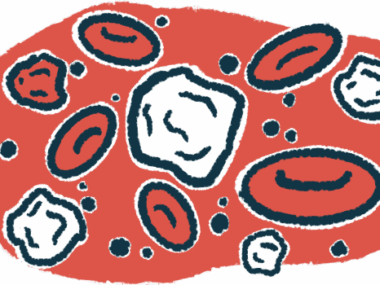Relapses Less Likely in Patients With Past Autoimmune Disorder: Study
Written by |

People with a past history of autoimmune disease before developing ANCA-associated vasculitis (AAV) have significantly fewer relapses after achieving remission, a study reported.
Post-remission chances of a relapse were 67% lower in these AAV patients and took longer to occur, findings showed. Its researchers argued that these results support a more “personalised approach” in treating the disease, especially as “cumulative toxicity associated with immunosuppressive therapy over time is problematic.”
This study is the first “to our knowledge exploring the frequency of existence of an autoimmune disease [past-medical history] in patients who are diagnosed with AAV and its impact, if any, in the clinical picture and outcome following immunosuppressive therapy,” the investigators wrote.
The study, “A past medical history of autoimmune disease predicts a future with fewer relapses in patients with ANCA-associated vasculitis,” was published in the journal Clinical and Experimental Rheumatology.
AAV is an umbrella term for autoimmune diseases that are characterized by inflammation in small blood vessels. The disorder is caused by the activation of neutrophils, a type of white blood cell, by autoantibodies called ANCAs. Activated neutrophils bind to cells that line blood vessels, release toxic granules, and further activate the immune system, leading to blood vessel damage.
ANCAs generally target one of two proteins — proteinase 3 (PR3) or myeloperoxidase (MPO) — that are found on immune cells and result in specific disease-related symptoms.
Microscopic polyangiitis (MPA), granulomatosis with polyangiitis (GPA), and eosinophilic granulomatosis with polyangiitis (EGPA) are the three main types of AAV.
Immunosuppressive therapies, which can be harmful, are used to manage and control the condition. Yet, a large portion of patients still experience relapses. Pinpointing the factors associated with relapses is important in preventing the need to repeatedly take these medications, and to achieve and maintain remission.
According to researchers, some AAV patients have a medical history of another autoimmune disorder at the time of AAV diagnosis, but the exact frequency is still unknown.
To learn more, a team of scientists in Greece determined how many people with AAV had a previous autoimmune disease, and compared the risk of relapse between those with and without this medical history.
The researchers analyzed information from AAV patients, ages 16 and older, diagnosed between 1991 and 2019.
A total of 206 patients (55.8% men) with a mean age of 54 were included in the study. About half of the patients were positive for PR3-ANCA and the other half for MPO-ANCA. GPA was diagnosed in 79 patients (38.3%), MPA in 97 (47.1%), and 30 people (14.6%) had renal-limited vasculitis, a form of AAV in blood vessel inflammation is found in the kidneys.
While kidney problems were seen in 158 patients (76.7%), lung involvement was evident in 92 (44.7%).
AAV patients with a history of autoimmune disease accounted for 31% of all study patients. Among these, 31 (49.2%) had a previous history of autoimmune thyroiditis, 16 (25.4%) rheumatoid arthritis, six (9.5%) psoriasis, five (7.9%) Sjögren’s syndrome, four (6.3%) Crohn’s disease, and one (1.6%) with scleroderma. The median time from past diagnosis of the autoimmune disorder to AAV diagnosis was almost six years.
Among the entire group, 59 patients either relapsed, died, or developed end-stage kidney disease (ESKD; kidney failure). Eight of these patients had a prior history of autoimmune disease.
Analyses linked a previous autoimmune disease diagnosis with a significant, 67% lower risk of relapse. This also held true in the presence of several relapse risk factors, including being male, age 60 or older, being positive for PR3-ANCA, as well as having kidney and lung involvement.
Additionally, the median time to relapse was significantly longer in patients with autoimmune disease history compared with those without it (148.2 vs. 61.9 months).
Remission rates were similar between these two patient groups (87.3% vs. 85.3%) and were not affected by the European Vasculitis Study Group (EUVAS) class — a classification system based on the types of glomerular lesions in the kidney that can be used to predict kidney function.
“Patients with a [past medical history] of autoimmune disease, prior to AAV diagnosis, experienced significantly fewer relapses after achievement of remission, compared to patients without such a history,” the researchers wrote.
“Most of all, these findings are clinically meaningful, as they underline the importance of [individualization] of the intensity and duration of therapy, which is given to maintain remission, considering the different [causative] backgrounds of AAV, and in order to avoid increasing the burden of immunosuppression if not needed,” they added.






